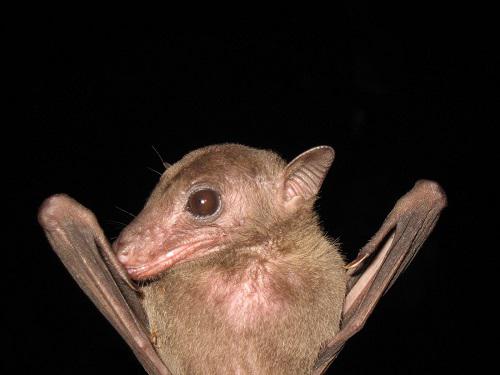Radosoa Andrianaivoarivelo
Other projects
30 Sep 2016
Flying Fox Habitat Restoration and Natural Forest Sustainable Management in Eastern Madagascar
5 May 2023
Food Resource Dynamics and Distribution of Natural Habitats May Determine the Panmictic Population Structure of Madagascar Fruit Bats and Improve their Strategic Management
This project will provide important data on the demand for bushmeat and the impact of hunting on the endemic threatened Malagasy fruit bat Rousettus madagascariensis.
%26Sylvestre(right)/9f0b7eab89b5041bd93d77b959d47737.JPG)
Radosoa (left) and Sylvestre (right).
During our previous field expedition, we found that, Rousettus madagascariensis roosts are under severe pressure from hunting and deforestation and some of the actually five occupied bat roost we found will probably be deserted within few years if no conservation plan would be undertaken with stakeholders. By the end of the workshop I organized In May 2007 I organized a meeting for village representatives about fruit bat conservation, the village leaders were awarded about this fact and they (chef of villages) created a set of roost-based byelaws (dina in Malagasy) in July 2007 to promote roost conservation and it became clear that even though they were willing to protect the roosts, I was lacking vital information with which I could create realistic conservation plans.

Rousettus madagascariensis. © Andrianaivoarivelo Radosoa.
It became clear that whilst I knew that R. madagascariensis was hunted I did not know by whom, or how often or why. Only by answering these questions can I hope to ameliorate the conservation status of the roosts. Furthermore, I was lacking any assessment on the impact of the hunting. This is true for the whole of Madagascar. For any study on sustainable hunting I need basic biological parameters and although I have some data (e.g. reproduction, sex ratio), I now need to obtain information on predation and dispersal. The group of R. madagascariensis roosts are accessible and represent a unique opportunity to study how these bats move between roost sites. The information collected will directly inform conservation plans.
These will only be successful if I can understand the dynamics of the demand for bat bushmeat and the impact it has on bat populations. Although it may be possible to promote the forest and cave roosts protections at the same time, I need information on both if the bats key diurnal (roost) and nocturnal (food) habitats are to be protected. The data will be used to formulate specific plans for each roost based on my results. All of the recommendations I make will use good science, such as the movement or migration of this species between long distance roosts. My results are likely to be of interest to other conservation programmes in Madagascar. It will also be important because if my ideas suggest major changes in peoples’ behaviour, I need to provide strong reasons. My results, when I make them easily understandable to villagers will be fed into a revised dina (byelaws) for each roost.